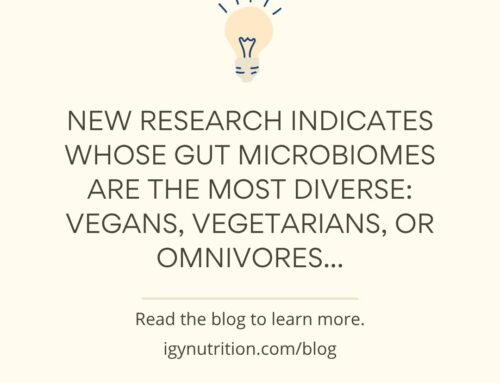When it comes to gut health, there is a list of common terms you may see and hear and think “what does that mean?” In this post, we’re going to define some of those words so you can finally understand their meaning and how it affects you. Is there a word you want to know about, but it’s not on the list? Let us know what it is in the comments below and we’ll add it!
Common Gut Terms Defined
Dysbiosis: Alterations in the development or composition of the microbiota.1
Gut microbiota (also called gut flora): The collection of bacteria and organisms found in the gastrointestinal (GI) tract.2
Leaky gut: When permeability of the small intestine is compromised allowing the passage of toxins, antigens, and bacteria to enter the bloodstream.3
Microbiome: Consists of the ecological community of microorganisms that share our body.4
Pathogens: by strict definition a substance like a bacteria that can cause disease.
The normal intestinal flora includes small populations of organisms that cause disease if they overgrow. For example, overgrowth of Clostridium difficile produces severe inflammation of the colon with diarrhea. Administration of antibiotics, surgery, illness, and/or poor lifestyle habits initiates the process by suppressing the normal flora.5
Probiotics: Probiotics are live microorganisms that, when administered in adequate amounts, confer a health benefit.6
Prebiotics: Prebiotics are non-digestible selectively fermented dietary fibers that specifically promote the growth of one or more bacteria in the gastrointestinal tract and thus provide health benefit.7
1 (Thomas S, Izard J, Walsh E, et al. The Host Microbiome Regulates and Maintains Human Health: A Primer and Perspective for Non-Microbiologists. Cancer research. 2017;77(8):1783-1812. doi:10.1158/0008-5472.CAN-16-2929).
2 (Thursby E, Juge N. Introduction to the human gut microbiota. Biochemical Journal. 2017;474(11):1823-1836. doi:10.1042/BCJ20160510.)
3 (Mu Q, Kirby J, Reilly CM, Luo XM. Leaky Gut As a Danger Signal for Autoimmune Diseases. Frontiers in Immunology. 2017;8:598. doi:10.3389/fimmu.2017.00598.)
4 (Lederberg J, McCray AT. ‘Ome Sweet ‘Omics—a genealogical treasury of words. Scientist 2001;15:8.)
5 (Gorbach SL. Microbiology of the Gastrointestinal Tract. In: Baron S, editor. Medical Microbiology. 4th edition. Galveston (TX): University of Texas Medical Branch at Galveston; 1996. Chapter 95. Available from: https://www.ncbi.nlm.nih.gov/books/NBK7670/)
6 (Hill C., Guarner F., Reid G., Gibson G.R., Merenstein D.J., Pot B., Morelli L., Canani R.B., Flint H.J., Salminen S., et al: Expert consensus document. The International Scientific Association for Probiotics and Prebiotics consensus statement on the scope and appropriate use of the term probiotic. Nat Rev Gastroenterol Hepatol 2014; 11: pp. 506-514)
7 (Wilson, B., and Whelan, K. (2017) Prebiotic inulin-type fructans and galacto-oligosaccharides: definition, specificity, function, and application in gastrointestinal disorders. Journal of Gastroenterology and Hepatology, 32: 64–68. doi: 10.1111/jgh.13700.)a




